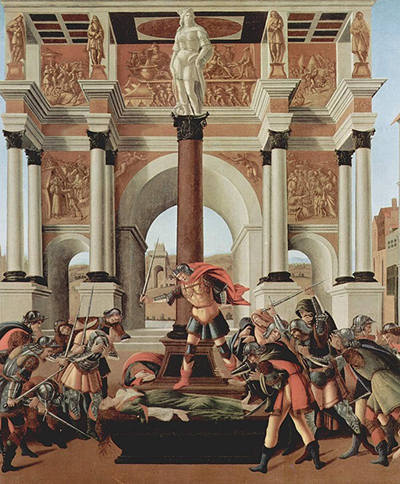The Story of Lucretia is now owned by the Isabella Stewart Gardner Museum in Boston and is a large tempera and oil on panel from 1496-1504
Botticelli's complex work is sometimes referred to as The Tragedy (Death, Suicide) of Lucretia due to the content of the stories told in it. Isabella Stewart Gardner originally owned it before signing it over to her Museum of the same name.
This large painting is 84cm x 180cm and uses every part of the panel in order to lay out a powerful scene with detailed figures and an elaborate background with architectural flourishes.
The emotional story depicts the aftermath of the rape of Lucretia, followed by her tragic suicide. Her loss is revenged with an uprising which is to lead to the end of the kingdom of Rome, with the assault on Lucretia having been carried out by Sextus Tarquinius, the King's son.
The way in which Botticelli styles the architecture in the background is reminiscent of both his pupil and his teacher - father and son from the Lippi family. Most famous artists would have a team of assistants as well as exchanging ideas and techniques with others, causing elements of their work to merge in some cases.
The underlying theme found here is of revolt against tyranny. The inclusion of David and Goliath's head continues this. Lucius Junius Brutus is also present, playing a key role in this narrative by expelling the guilty man and continuing to seek change in the name of the victim, Lucretia.




